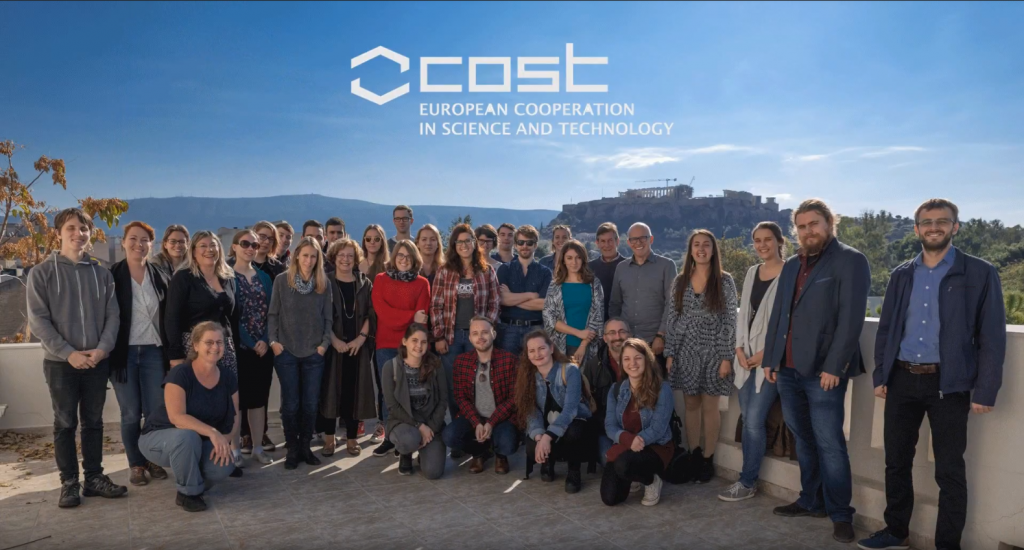COST-ARKWORK Final conference

COST-ARKWORK is a network funded by the COST scheme that brings together the multidisciplinary work of researchers of archaeological practices in the field of archaeological knowledge production and use. The aim of the network is to make a major push forward in the current state-of-the-art in knowing how archaeological knowledge is produced, how it is used and how to maximise its positive impact in the society. The focus of ARKWORK is on training the next generation of scholars and stakeholders by involving future leaders of research but also high profile experts employed by the industry and public organisations through events and visits to foreign institutions is a key to the longevity of the outcomes.
After four years of intensive work, COST-ARKWORK invites participants to an online final conference on Feb 10, 2021. The programme consists of keynote lectures, showcasing of the work conducted in the network, an industry forum roundtable, and an open forum for presentations of work related to archaeological practices and knowledge work in the digital environment.
Time and location
The conference was organised online in Zoom on February 10, 2021 between 9 am and 5 pm CET.
The conference was streamed live on YouTube. Recordings of the conference talks will be published later and will be available on this website.
Registration
Participation in the conference is free of charge but requires registration.
Materials
- Presentation slides and handouts are linked to the programme below
- Zoom Background (1920X1080px PNG): Dark, Light
- Links to presentation slides in the programme below
- Links to recorded sessions in the programme below
Programme
All times are in CET. Small changes in the programme are still possible. Note that the conference sessions will be recorded.
Feb 10
09:00-09:30 Opening of the conference
09:30-10:15 Keynote: Dr. Rachel Opitz, University of Glasgow “Self-evidently Revolutionary” (abstract below)
10:15-10:30 Break for coffee and tea
10:30-11:30 COST-ARKWORK Working Groups present highlights of their work
- Archaeological data and collections (WG2)
- Archaeological fieldwork (WG1)
- Archaeology and communities (WG3) (Slides PDF)
- Archaeological scholarship in the digital environment (WG4) (Slides PDF)
11:30-11:35 Short break
11:35-12:15 Invited lightning talks
- HERISTEM (Rajna Sosic Klindzic, University of Zagreb)
- CAPTURE (Lisa Börjesson & Zanna Friberg, Uppsala University) (Slides PDF)
- PURE3D (Costas Papadopoulos, University of Maastricht)
- Text Analysis of Stecci Inscriptions (Meliha Handzic, International Burch University) (Slides PDF)
- Searching, Accessing, and Discovering: Factors that influence the findability, accessibility, and discoverability of digitised archaeological collections (Anna Leary, University College Dublin)
- E-CURATORS (Costis Dallas, University of Toronto & Digital Curation Unit, Athena Research Centre)
- Q&A
12:15-13.00 Coffee table breakout discussions
- Archaeological fieldwork (WG1)
- Archaeology and communities (WG3)
- Archaeological scholarship in the digital environment (WG4)
- Archaeological data and collections (WG2)
13.00-13:15 Summing up coffee table discussions
13:15-14:00 Break for lunch
14:00-15:00 Roundtable: Archaeological practices and knowledge work in the digital environment (Costis Dallas, Antonia Davidovic, Suzie Thomas, Jeremy Huggett, Amber Cushing, Moderator: Isto Huvila)
15:00-15:30 Coffee and tea in breakout rooms
15:30-16:30 Industry Forum Roundtable: Industry perspectives to archaeological practices and knowledge work in the digital environment (Dorina Moullou, Hellenic Ministry of Culture, Education and Religious Affairs; Dirk Rieke-Zapp, Hexagon Manufacturing Intelligence; Suvi Debenjak, Inari Software AG; Kari Uotila, Muuritutkimus Ltd.; James Kyle, Archaeology and Built Heritage Ireland and Chair, Institute of Archaeologists Ireland; Kai Salas Rossenbach, INRAP; Moderator: Isto)
16.30-17:00 Closing of the conference
Keynote
Dr. Rachel Opitz, University of Glasgow
Self-evidently Revolutionary
This keynote explores the impact of lidar on our conception and knowledge of forests and human interactions with them as a lens through which to inspect and reflect on the impacts of new data and technologies on archaeological knowledge work. When the first aerial lidar surveys revealing archaeological remains appeared in the literature in the early 2000s, there was a real sense of magic about them, and particularly about the results from forested landscapes. The unprecedented scale and speed of the technology for recording and making legible archaeological remains as expressed through their surface topography, combined with the ability to see through the woodland canopy, which together allowed researchers to produce crisp, plan views of the details of archaeological features continuously across forested and open areas in a way that was effectively impossible to achieve on the ground, seemed self-evidently revolutionary. With the advent of lidar, it was widely held that now information on the presence of archaeological remains in forests, and on their type, character and distribution, would be readily (if expensively) available and thus the archaeology of these forests, and their roles in the broader landscape, would be better understood.
Some twenty years later, the amount of available information on the presence and character of archaeological remains preserved in forests and linked to human engagement with forests in the past is undeniably greatly increased. But has our understanding of forests, human interactions with them, and their place in the physical and social landscape changed in any meaningful way as a result?
